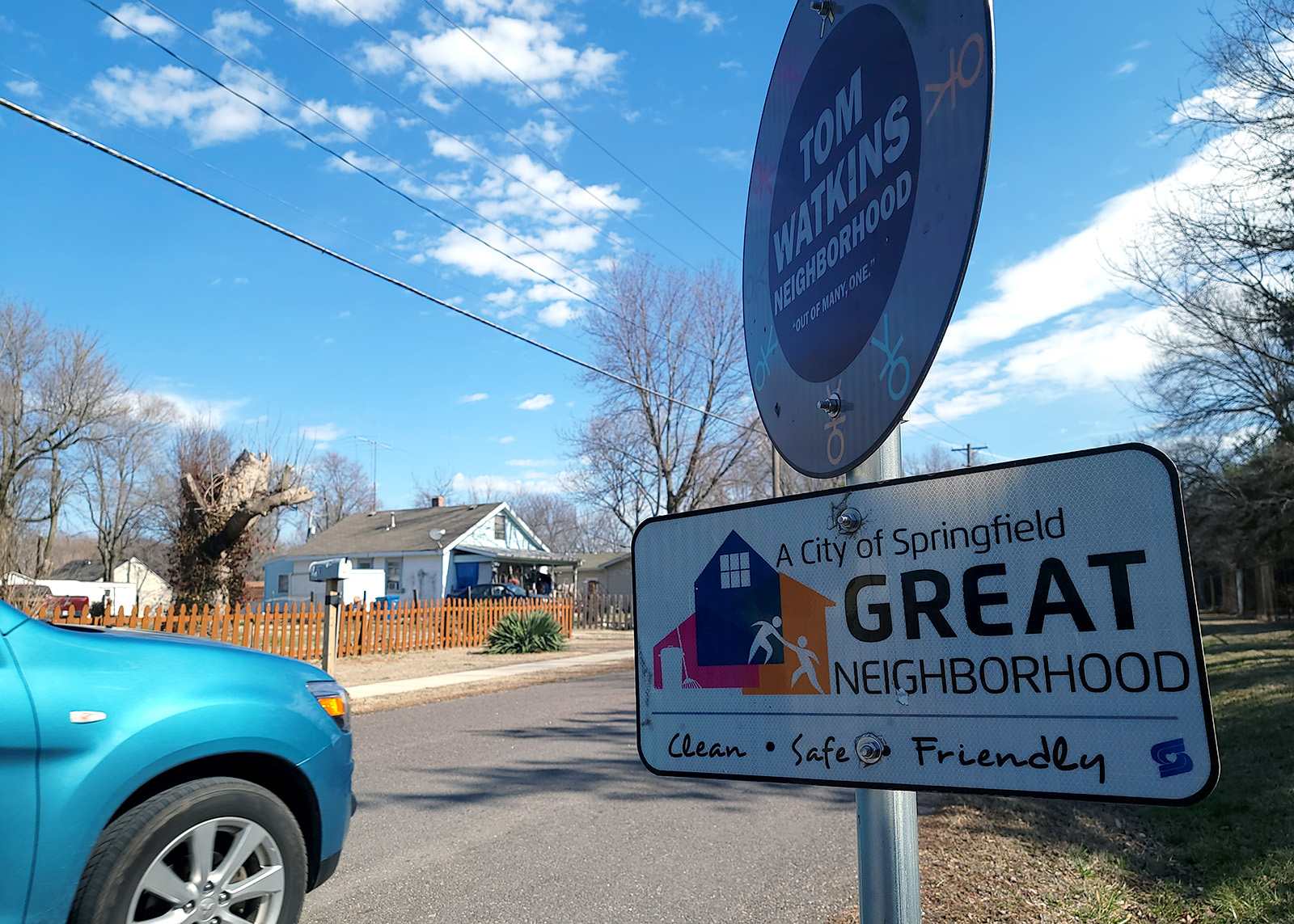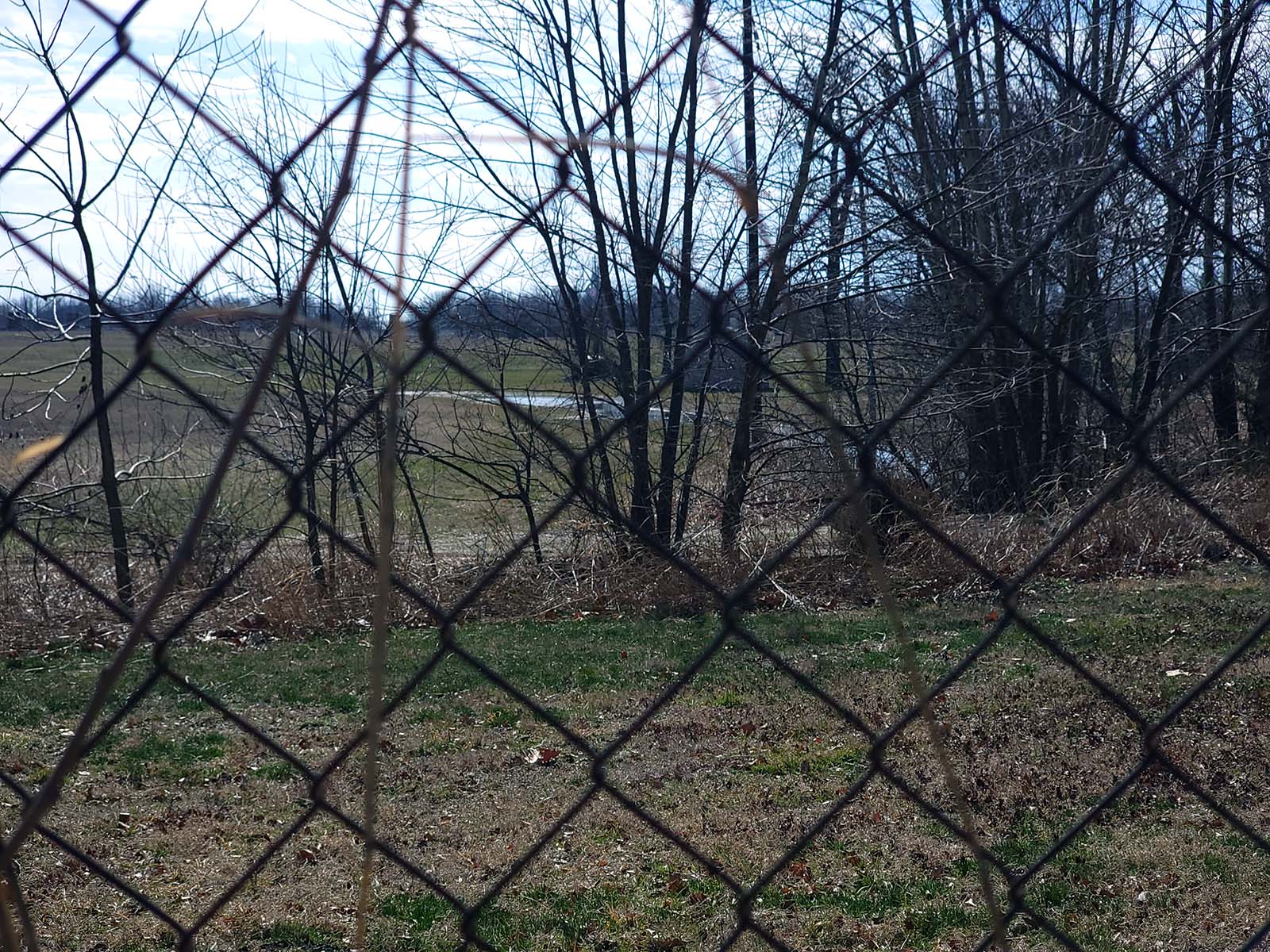About two hours into an update on the ongoing efforts to clean creosote contamination at and around a former railroad tie plant, a man in a capacity audience of northwest Springfield residents pointed out some concerning math. The money dedicated to cleaning up the mess caused by dumping untold gallons of the wood-treating chemical, a probable human carcinogen, into a set of unlined lagoons seemed to be running low.
Indeed it was, confirmed Tasha Lewis, program director with the Multistate Environmental Response Trust. Earlier in the meeting, she’d explained that about $14 million remained from a $24.7 million settlement fund dedicated to addressing contamination at the site. Creosote was used for about a century to treat railroad ties at the former Kerr-McGee plant. The chemical was dumped along with wastewater into a series of three unlined lagoons up until federal regulations were put in place to stop it in the 1980s.
The trust has taken numerous tacts to mitigate the contamination, including pumping and dumping millions of gallons of groundwater, testing air, soil and water at surrounding properties, replacing about 9,500 feet of sewer line and addressing contamination in a nearby basin. The costs of the efforts add up, Lewis said.
The groundwater recovery system alone, which has extracted 6,000 gallons of creosote from 81 million gallons of water since the trust took over responsibility for running it in 2011, costs about $750,000 per year to maintain, she said.
So, the audience member pointed out, the trust is spending around $1 million per year and has $14 million left. Did that mean the trust is on pace to run out of money to care for the Springfield site in 14 years?
Actually, Lewis told the crowd gathered Feb. 22 at the American Legion Post 676's Foxhole Bar and Grill, the fund is projected to run out of money sooner than that.
In 2022, the trust budgeted nearly $2.7 million for expenses tied to the site, according to its records.
“I do that math every day,” Lewis said.
Of the hundreds of former industrial sites in 31 states that the trust took over as part of a massive bankruptcy settlement in 2011, Lewis said Springfield’s former Kerr-McGee railroad tie plant is one of six in the nation with funding concerns.

Backstory of the Kerr-McGee plant, and why it’s surrounded by barbed-wire fencing and hazardous waste signs
From 1907 to 2004, railroad ties were treated at a 68-acre facility located at 2800 W. High St. Creosote, now considered a probable human carcinogen, was among several chemicals used to preserve the ties, and it was dumped with wastewater into a set of lagoons and then into an “experimental land farm,” contaminating the soil and groundwater.
Kerr-McGee, which acquired the facility in the 1960s, decommissioned it in 2004 and transferred ownership, as well as the responsibility for site cleanups, to Tronox, a shell company that filed for bankruptcy soon after.
Kerr-McGee assets of value, however, were sold to Anadarko. As part of the 2011 Tronox bankruptcy settlement, the Multistate Trust was created to own, investigate and clean the facility (and scores of others across the country) to make it safe and reusable, and about $2 million in funding was dedicated to the Springfield cleanup. Later, Anadarko agreed to pay $5.15 billion to the trust in a historic settlement case. About $22.7 million of the settlement was dedicated to the Springfield cleanup.
Trust looks to address biggest issues linked to decades of unregulated contamination, while also working to increase funding (or find a buyer)
There are paths to additional funding, she said. The trust’s beneficiaries are the federal government and state agencies like the Missouri Department of Natural Resources, which had a staff member on hand at the meeting. Lewis said there are ongoing conversations with MoDNR, the Environmental Protection Agency and the U.S. Department of Justice in regard to the Springfield site.
The trust is also able to tap into “waterfall funding” — money remaining from other sites where cleaning projects have concluded — and redirect it to Springfield if and when the need arises.
Or it could sell it. The trust, which holds the title to the former Kerr-McGee plant, would need sign-offs from federal and state partners to sell to a buyer who would agree to assume control of the cleanup as part of the purchase. And Lewis said the trust would like to work with community members and local stakeholders to determine how best to safely reuse the site. The facility’s future use remains undecided.
In the meantime, the trust continues to fund cleaning at the site and investigations around it. Lewis shared some promising news with residents during her first presentation in Springfield since the start of the pandemic. In air, groundwater, surface water and soil samples, the trust has not yet found contaminants linked to the facility at levels that have been deemed harmful to human health. The sampling process is ongoing, she said, and recent efforts have expanded the investigation.
In summer 2021, testing of 42 wells located on 65 private properties about a half mile north of the former plant, the trust did not find facility-related contaminants that exceeded groundwater protection standards. (Lewis said the owners of the other 23 properties did not provide the trust access to test wells.) The city’s drinking water meets all regulatory requirements, she said.
But concerns remain. For one, Springfield’s karst topography — with caverns and sinkholes beneath the shallow bedrock under the city — allows groundwater contaminants to potentially spread further and more haphazardly than they would in other environments.
An area of particular concern is a detention basin in the Golden Hills Subdivision, about a half mile northeast of the former plant. Lewis said the trust is exploring the feasibility of developing treatment wetlands in the detention basin.
Monitors there have detected the presence of a semi-volatile organic compound, naphthalene, at higher concentrations in the groundwater. Naphthalene, Lewis said, is generally unique to creosote. The trust, Lewis said, is monitoring that area and many others — including 30-plus groundwater wells surrounding the former plant — for a set of what she described as contaminants of concern. Benzene, toluene, ethylene and xylene are volatile organic compounds. Benzene, Lewis said, is a carcinogenic chemical, “and what that means is that it can cause cancer, and of course, that's something that in my past experience in speaking with residents in this community is a concern.”
Soil sampling is currently underway on seven surrounding properties where black-stained soil was found about three feet below the surface during sewer maintenance excavation. The sampling results will determine whether the stained soils are a risk to human health and need to be removed.
And, as longtime Golden Hills resident Karen Hester said, it still stinks. It's worse in the summer, she said, and even more so at night. Creosote has a pungent smell, comparable with just-poured asphalt, and Hester said it has been headache-inducing and nauseating for her. She said it also concerned her in terms of property values, which Lewis said has been a universal concern among residents she’s spoken with in Springfield and elsewhere. She said the trust had funded a vapor intrusion investigation that found no sign that chemicals from contaminated groundwater or soil were being detected in any homes that were sampled. She added that the trust and MoDNR have heard from numerous residents about odor issues, and residents can report concerns online or by calling 417-942-0190.
“I know what creosote smells like,” Lewis said. “It stinks. And when it rains, it stinks.”
She said if reports are relayed to the trust, they will be investigated and the community will be provided with the results.
Notice an odor near the former wood-treating facility at 2800 W. High St.? Report it.
The Missouri Department of Natural Resources notes that residents living near the former Kerr-McGee wood-treating plant have noticed foul odors in the old plant’s proximity. And MoDNR asks that residents report it here when it happens again so that the department and the Multistate Environmental Response Trust can attempt to locate the source and reduce or eliminate it.

‘There is cancer up and down that street’
Vicki Paasch’s mother, who lives on North Fulbright Avenue, directly north of the former plant, has lung cancer. Paasch knew of two more neighbors who have had cancer as well. She said she was concerned that the proximity to the former plant and the illnesses were connected.
“There is cancer up and down that street,” Paasch said Wednesday night.
Others in attendance shared similar collections of ailments endured by family and neighbors in the area surrounding the former plant.
“My mom had esophageal cancer,” said Tiffany Pasco, adding that she lived on High Street just across from the treatment site. “My father died with a 104-millimeter tumor in his head. My niece has seizures due to her heart complications because of anemia. My son here, he was 41 days old and he has evidence of interstitial lung disease.”
The treated railroad ties, once stacked by the hundreds at the plant, had to be connected, she said. And then she left the meeting with her son, a toddler, in tow.
The CDC states that long-term exposure to low levels of creosote, especially in direct contact with the skin during the wood treatment process, has resulted in cases of skin cancer and cancer of the scrotum. The EPA states that coal tar creosote is a probable human carcinogen.
When residents spoke up to share stories of family illnesses, Lewis thanked them for sharing and said that community recollections are part of the data that helps guide where and what to investigate. Early in the presentation, she pointed out that the multistate trust is tasked with cleaning the contaminated area but not with compensating residents who report harm.
“Our purpose is really to protect human health and the environment,” Lewis said. “We are not (a) potential responsible party. We are a court-appointed trust, and our beneficiaries are governmental agencies.”
Lewis said that personal injury claims should be directed to the Tronox Tort Claims Trust at 800-753-2480 or tronoxtorttrust@epiqglobal.com.
“I will say this,” Lewis said. “I don't know how responsive they will be. That's been the feedback from the community.”
For Paasch and others in attendance, Lewis provided the phone number of a Missouri Department of Health and Human Services staff member and encouraged people who have lived in the area surrounding the chemical waste site to get their lived stories on record.
“I don’t know where that will go, and what that gets you,” Lewis said. “But share your story.”
Contact information for representatives connected to the cleanup project
Abby Sawyer, MoDNR project manager: 573-526-5397 | Abby.Sawyer@dnr.mo.gov
Tasha Lewis, Multistate Trust program director: 602-312-6993 | TL@g-etg.com
Babs Garcia, Multistate Trust contract project manager with EWI: 417-616-6539 | bgarcia@environmentalworks.com

